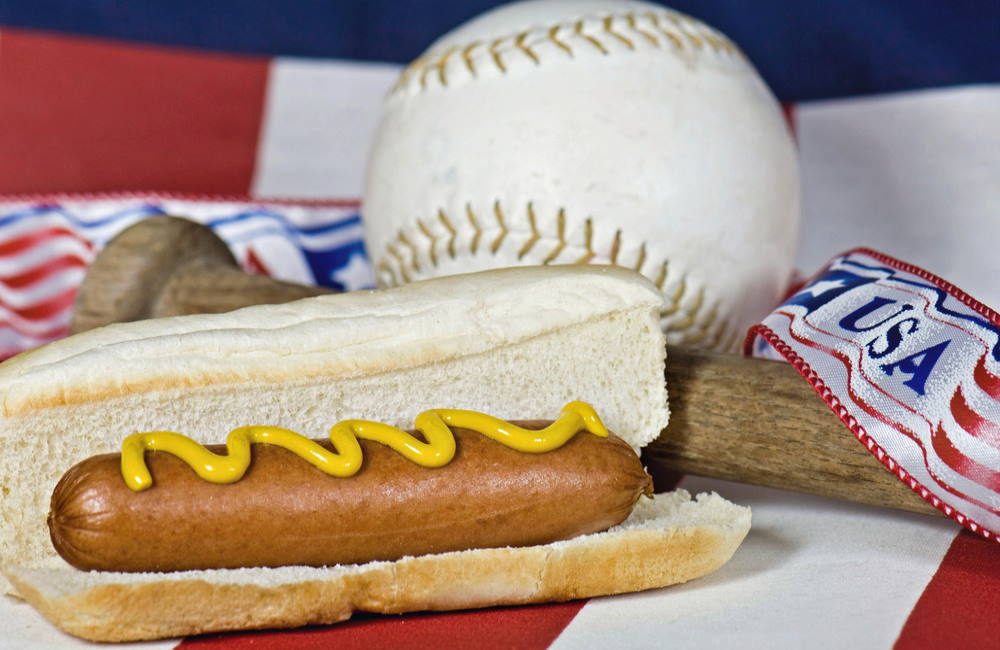
What Country Invented Hot Dogs? A Deep Dive into the Culinary History
The question, “what country invented hot dogs?” seems simple, but the answer is surprisingly complex and intertwined with immigration, industrialization, and good old-fashioned American ingenuity. While the hot dog is a quintessential American food, its roots lie firmly in Europe. This article explores the fascinating journey of the hot dog, tracing its origins from European sausages to the ballpark staple we know and love today. We’ll delve into the contributions of different cultures and individuals, separating fact from fiction and uncovering the truth behind this iconic snack. Prepare to be surprised – the story of the hot dog is much richer than you might expect!
The Sausage Roots: Germany and Austria
The story of what country invented hot dogs truly begins with sausages in Europe. Several German cities lay claim to being the birthplace of the sausage that would eventually evolve into the hot dog. Frankfurt, Germany, is often cited as the originator of the frankfurter, while Vienna, Austria, claims the wiener (from “Wiener Würstchen,” meaning “Viennese sausage”). These sausages, typically made from pork and beef, were brought to America by German immigrants in the 19th century.
Frankfurt vs. Vienna: The Sausage Debate
The debate over whether the frankfurter or the wiener came first is ongoing. Both sausages share similar characteristics – a long, thin shape, a blend of meats, and a smoky flavor. However, subtle differences exist in the spices and preparation methods. Regardless of which sausage predates the other, both played a crucial role in the development of the hot dog.
German Immigration and the Rise of Sausage Carts
As German immigrants arrived in America, they brought their culinary traditions with them. Sausage carts became a common sight in cities like New York, offering a taste of home to fellow immigrants and introducing American palates to the delights of German sausages. These carts often sold frankfurters and wieners, served simply with bread or rolls.
The American Hot Dog: Innovation and Adaptation
While the sausages themselves originated in Europe, the American hot dog as we know it is a distinct creation. It’s a product of American ingenuity, entrepreneurship, and a desire to cater to a rapidly growing urban population. The precise origin story of the hot dog is shrouded in mystery, with multiple individuals and businesses claiming to have invented it.
Charles Feltman and Coney Island
One of the earliest and most credible claims comes from Charles Feltman, a German immigrant who opened a hot dog stand on Coney Island in 1871. Feltman is credited with serving sausages in long rolls, making them easier to eat on the go. His stand quickly became a popular destination, and he is often considered the father of the American hot dog.
The Invention of the Hot Dog Bun
While Feltman popularized the sausage-in-a-roll concept, the invention of the specifically designed hot dog bun is often attributed to other vendors. Stories abound of bakers creating custom rolls to fit the sausages perfectly, preventing customers from burning their hands. The hot dog bun was a game-changer, making the hot dog even more convenient and portable.
Nathan Handwerker and Nathan’s Famous
Another key figure in the history of the hot dog is Nathan Handwerker, a Polish immigrant who worked for Feltman before opening his own hot dog stand, Nathan’s Famous, in 1916. Handwerker undercut Feltman’s prices, offering hot dogs for just a nickel. His stand quickly became a rival to Feltman’s and helped popularize the hot dog even further.
The Hot Dog as a Symbol of American Culture
By the early 20th century, the hot dog had become firmly entrenched in American culture. It was a cheap, convenient, and delicious food that appealed to people from all walks of life. The hot dog’s association with baseball and other sporting events further solidified its place in the American culinary landscape.
Hot Dogs at the Ballpark
The connection between hot dogs and baseball is undeniable. Ballparks across the country began selling hot dogs, providing fans with a quick and easy meal while they watched the game. The hot dog became synonymous with the baseball experience, and to this day, millions of hot dogs are sold at ballparks each year.
The Hot Dog Eating Contest
The Nathan’s Famous Hot Dog Eating Contest, held annually on Coney Island on July 4th, is a testament to the hot dog’s enduring popularity. The contest attracts thousands of spectators and is broadcast live on television, showcasing the competitive spirit and the American love of excess.
Regional Hot Dog Variations: A Culinary Melting Pot
The hot dog has evolved into countless regional variations, reflecting the diverse culinary traditions of different parts of the United States. From the Chicago-style hot dog to the New York-style hot dog, each variation offers a unique flavor profile and a glimpse into the local culture.
The Chicago-Style Hot Dog
The Chicago-style hot dog is a culinary masterpiece, featuring an all-beef frankfurter on a poppy seed bun, topped with yellow mustard, chopped white onions, bright green sweet pickle relish, a dill pickle spear, tomato slices or wedges, pickled sport peppers, and a dash of celery salt. Ketchup is strictly forbidden on a Chicago-style hot dog.
The New York-Style Hot Dog
The New York-style hot dog is typically a steamed all-beef frankfurter on a plain bun, topped with mustard and sauerkraut or onion sauce. It’s a simple yet satisfying meal that reflects the fast-paced lifestyle of New York City.
Other Regional Variations
Other notable regional hot dog variations include the Coney dog (Michigan), the Sonoran hot dog (Arizona), and the Seattle dog (Washington). Each variation features unique toppings and flavor combinations, showcasing the versatility of the hot dog.
The Hot Dog Industry Today
The hot dog industry is a multi-billion dollar business, with millions of hot dogs consumed every year. Hot dogs are available in a wide variety of flavors, sizes, and styles, catering to diverse tastes and preferences. The industry continues to innovate, with new and exciting hot dog products constantly being introduced to the market.
Major Hot Dog Manufacturers
Several major manufacturers dominate the hot dog industry, including Oscar Mayer, Ball Park, and Hebrew National. These companies produce a wide range of hot dog products, from classic beef frankfurters to gourmet sausages.
The Rise of Gourmet Hot Dogs
In recent years, there has been a growing trend towards gourmet hot dogs, featuring high-quality ingredients and creative toppings. These gourmet hot dogs are often sold at specialty restaurants and food trucks, catering to a more discerning clientele.
What Country Invented Hot Dogs: The Definitive Answer
So, what country invented hot dogs? While the sausages themselves originated in Germany and Austria, the American hot dog as we know it is a distinct creation. It’s a product of American ingenuity, entrepreneurship, and a love of good food. The hot dog is a symbol of American culture, a culinary icon that has evolved over time to reflect the diverse tastes and traditions of the United States.
Hot Dog FAQs
1. What is the difference between a frankfurter and a wiener?
While often used interchangeably, frankfurters are traditionally made with pork, while wieners typically contain a mix of pork and beef. The spices and preparation methods can also vary slightly.
2. Why are hot dogs often associated with baseball?
Ballparks began selling hot dogs in the late 19th and early 20th centuries, providing fans with a convenient and affordable meal. The hot dog became synonymous with the baseball experience.
3. What is the origin of the hot dog bun?
The exact origin is uncertain, but bakers likely created custom rolls to fit the sausages, making them easier to eat without burning hands.
4. What are some popular hot dog toppings?
Popular toppings include mustard, ketchup, relish, onions, sauerkraut, chili, cheese, and various regional specialties like those found on a Chicago-style hot dog.
5. Are hot dogs healthy?
Hot dogs are generally high in sodium and fat. Choosing leaner varieties and limiting consumption is recommended for a healthier diet.
6. What is a Coney dog?
A Coney dog is a hot dog topped with chili, mustard, and onions, popular in Michigan.
7. What is the Nathan’s Famous Hot Dog Eating Contest?
An annual competition held on Coney Island where contestants compete to eat the most hot dogs in a set amount of time.
8. How are hot dogs made?
Hot dogs are typically made from ground meat (beef, pork, or poultry), mixed with spices, preservatives, and binders, then stuffed into casings and cooked.
9. What is the best way to cook a hot dog?
Hot dogs can be grilled, boiled, steamed, or microwaved. Grilling often provides the best flavor.
10. What is the shelf life of hot dogs?
Unopened hot dogs can typically be stored in the refrigerator for up to two weeks. Once opened, they should be consumed within a few days.
Conclusion
The journey of the hot dog from its European sausage roots to its current status as an American icon is a fascinating story of cultural exchange, innovation, and adaptation. While Germany and Austria provided the initial inspiration, the United States transformed the sausage into the hot dog we know and love today. So, the next time you bite into a hot dog, remember the rich history and diverse influences that have shaped this beloved American food. Share your favorite hot dog toppings and regional variations in the comments below!

